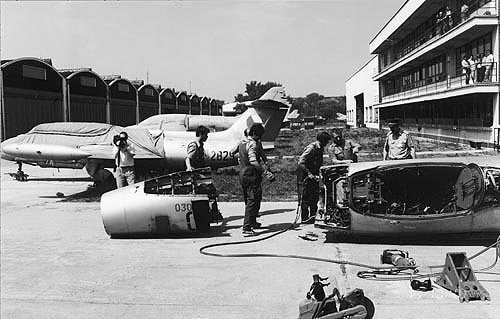
A Treaty That Ended the Cold War in Europe Is Denounced in Moscow
Publication: Eurasia Daily Monitor Volume: 12 Issue: 46
By:

This week, the Russian Ministry of Foreign Affairs announced it will no longer attend the meetings of the Joint Consultative Group (JCG) of the Conventional Forces in Europe (CFE) treaty of 1990. The Russian arms control representative in Vienna, Alexander Mazur, told reporters: “The withdrawal from CFE announced by Russia in 2007 is now complete.” After abandoning CFE, Russian representatives continued to attend JCG meetings as a gesture of good will, in the hope this forum may become a framework to negotiate a new arms control regime to replace CFE, but “NATO [North Atlantic Treaty Organization] nations made this impossible.” According to Mazur: “Our Western partners regularly used the JCG meetings to petition Russia with ritualistic and pointless pleas to renew CFE compliance.” Russia asked Belarus to represent it in the JCG in the future (Interfax, March 10).
Negotiations began in Vienna in 1973 to cut down the vast armies of East and West that faced each other in Central Europe during the Cold War. For 16 years, the talks were fruitless, as Moscow opposed Western assessments of its military might. The Soviet Union had secretly assembled superior numbers of armor in preparation of a major westward offensive to defeat NATO, push Russian to the British Channel and occupy all of Europe. In 1989, Soviet leader Mikhail Gorbachev and Foreign Minister Eduard Shevardnadze agreed with Western estimates of heavy weapons holdings in Europe west of the Urals. The CFE talks were concluded and the treaty was signed in November 1990, in Paris, with transparent verification procedures. A mass withdrawal of Soviet forces and weapons began. As the Warsaw Pact and the Soviet Union collapsed, by 1994 all Russian troops and weapons were out of Central Europe.
The CFE Treaty imposed limits on the maximum number of tanks, artillery, armored vehicles, combat helicopters and warplanes that could be deployed in Europe. It also divided Europe into zones with specific limits of weapons. CFE effectively ended the Cold War standoff in Europe as all countries—East and West—scrapped their armaments and cut their defense forces, decreasing their sizes far below the allowed CFE limits. The United States cut its military presence in Europe ten times, from over 600,000 to just over 60,000 today. War in Europe seemed impossible. In 1992, in Tashkent, the Soviet CFE quota was divided up among the newly independent successor states. Russia’s CFE ceilings (European Russia only) included 6,400 tanks, 11,480 combat armored vehicles, 6,415 artillery pieces, 3,450 combat aircraft and 890 armed helicopters. The quota is bigger than Russia needs or actually possesses. The Russian military was, in fact, mostly annoyed by the CFE zone or “flank” limitations. Russia’s troop deployments in the Caucasus region regularly exceeded the CFE limits. In 1999, at a summit of the Organization for Security and Cooperation in Europe (OSCE), in Istanbul, member countries signed a revised CFE treaty that somewhat reduced the overall quotas of all signatory nations and significantly increased Russia’s “flank” allocations. In return, President Boris Yeltsin promised to remove all Russian troops from Georgia and Moldova by 2004. However, Vladimir Putin became president in 2000, Russian troop withdrawals from Georgia and Moldova never fully materialized, and the Western nation did not ratify the revised CFE (Interfax, March 11).
In an annual address to a joint session of parliament in April 2007, Putin announced “a moratorium on Russia’s implementation of the CFE treaty.” Putin accused the West of financing internal dissent inside Russia and “building up armed forces in direct proximity to Russia’s borders” (Kremlin.ru, April 26, 2007)—which seemed like just an outburst of rhetoric aimed at internal consumption, but now, in retrospect, sounds more like the first blasts of a renewed cold war. Putin’s original proposal of a “CFE moratorium” turned out to be legally impossible, and on July 13, 2007, citing national security concerns, Putin signed an ukaz (decree) to “suspend” Russia’s participation in the CFE treaty, exercising the national sovereignty clause in CFE’s Article 19 (Kremlin.ru, July 13, 2007).
Washington and its NATO allies attempted to negotiate some compromise to bring Russia back into CFE, but all failed—on December 13, 2007, Russia effectively abrogated CFE and stopped all compliance, including the intrusive verification, notification of troop movement and onsite inspections under the arms control treaty. Speaking in November 2007, in the Duma, before it voted unanimously to “suspend” Russian participation in CFE, Russia’s top general at the time, First Deputy Defense Minister and Chief of the General Staff, General Yuri Baluyevsky announced: “CFE allows the US to constantly monitor Russian troops and their readiness in the European zone of Russia” (RIA Novosti, November 7, 2007).
Russia’s move against CFE seemed an attempt to extract concessions on “flank” limitations, find a formula that could allow a continued limited military presence in the Transnistria region of Moldova, and force NATO nations to finally ratify the adapted CFE. In fact, the Kremlin’s main target may have been the indefinite “suspension” of CFE’s intrusive verification and onsite inspections. The CFE treaty was abrogated less than nine months before the massive Russian invasion of Georgia in August 2008. Intrusive CFE inspections could have provided prior notice of Russia’s preparations to attack Georgia. The invasion of Georgia was followed, in 2014, by the annexation of Crimea and a Russia-inspired war in Ukraine’s eastern region of Donbas. The preliminary military preparations of Russian military actions in Crimea could have begun much earlier. Since 2007, Moscow continued to obstinately resist all Western initiatives to restore CFE under any conditions. Last November, Russia’s Foreign Minister Sergei Lavrov publicly declared: “CFE is dead, and there will be no return” (Interfax, March 11).
Putin’s policy turning point seems to have been the “color revolutions” in Georgia in 2003 and Ukraine in 2004—the so-called First Maidan—that installed pro-Western regimes in the post-Soviet space, which Moscow always considered its own. In 2007, a strategic decision appears to have been reached in the Kremlin to use military force, if needed, to roll back Western (US) incursions and impose Russian dominion. In February 2007, in a major policy speech, Putin surprised Western dignitaries at a security conference in Munich, blasting the European Union, the US, NATO, OSCE and the West in general, demanding a new world order that would secure Russia’s interests (Kremlin.ru, February 10, 2007). Today, Russian troops are constantly on the move and engaged in aggressive offensive action. A cold war–type confrontation is on in Europe, and CFE is long dead.




